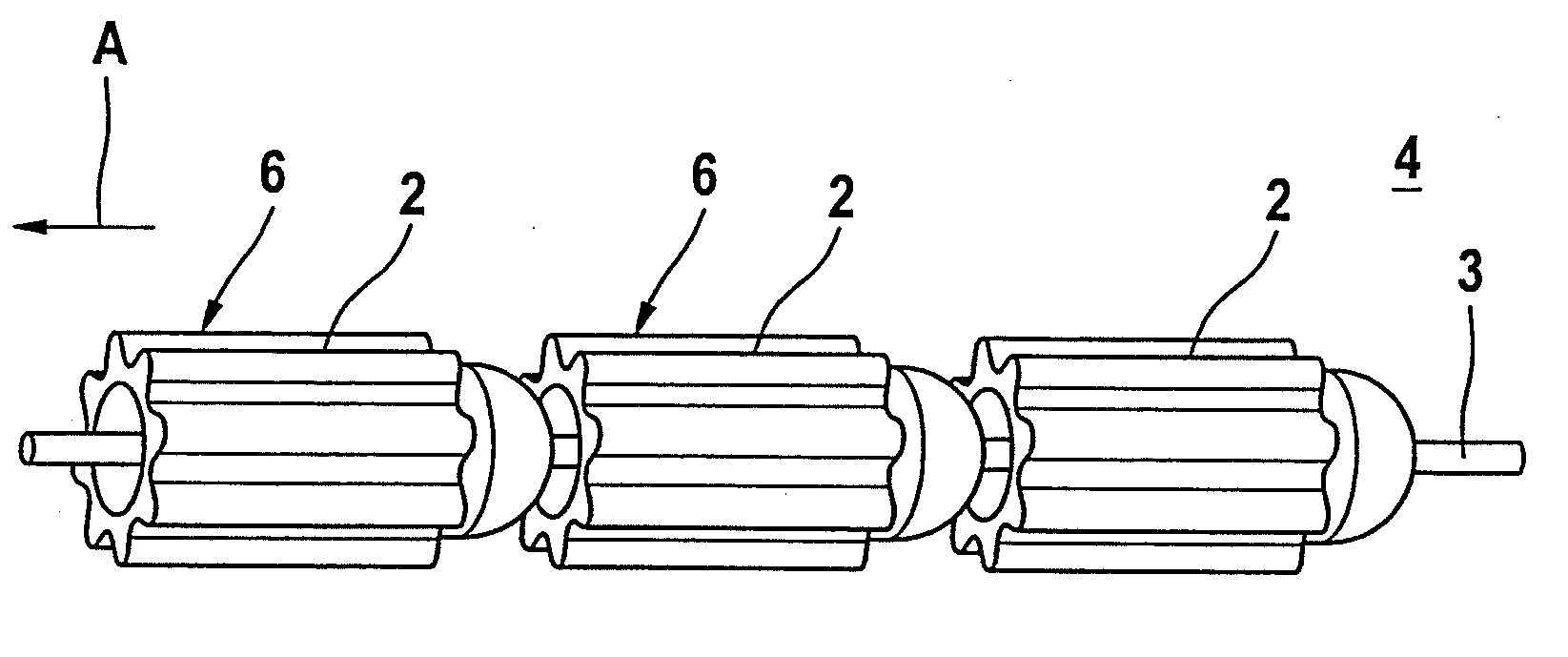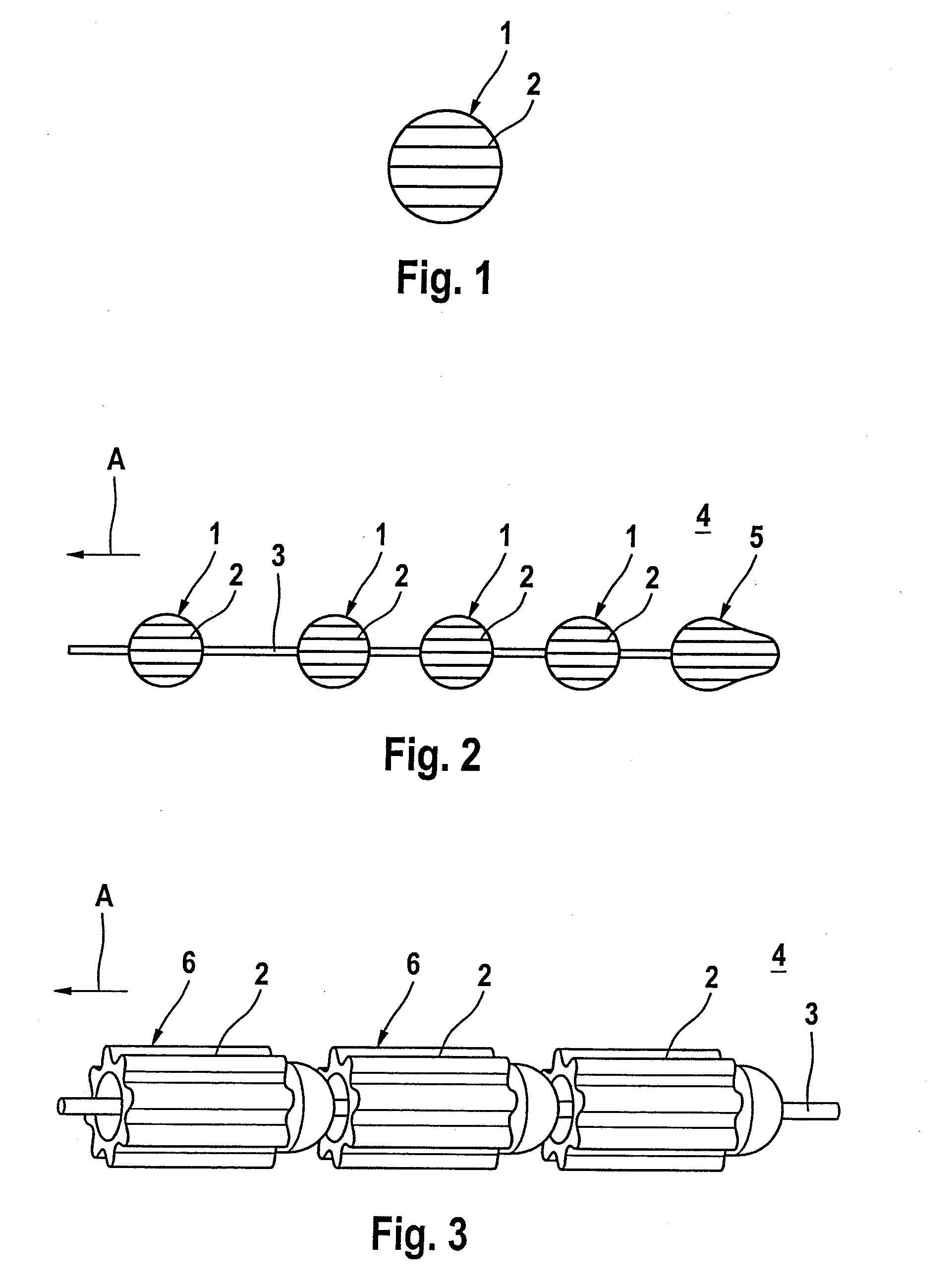Material depot for releasing an antibacterial active agent
a technology of antibacterial active agents and material depots, which is applied in the field of material depots, can solve problems such as effective destruction, and achieve the effects of simple removal, easy implanting of the chain, and simple dispensing of the active ingredient material
- Summary
- Abstract
- Description
- Claims
- Application Information
AI Technical Summary
Benefits of technology
Problems solved by technology
Method used
Image
Examples
Embodiment Construction
[0026]FIG. 1 shows a spherical material depot 1 with parallel grooves 2. The material depot 1 contains an antibacterial active ingredient material and dispenses the latter in a human or animal body (not illustrated) via its surface with open pores.
[0027]FIG. 2 shows a material depot chain 4 with a number of material depot spheres 1 in accordance with FIG. 1, which are fixed on a central wire 3. The material depots 1, 5 have grooves 2 which are arranged in parallel with respect to one another and in the direction of the tensile force in accordance with arrow A.
[0028]FIG. 3 illustrates a further material depot chain 4 with a number of roller-shaped material depots 6 which are fixed on a central wire 3. The roller-shaped material depots 6 have concave-convex faces which correspond to each other in place of the opposing planar surfaces which are customary in the case of a cylinder. This makes an articulated movement of the chain elements possible, even in the case of a small distance be...
PUM
| Property | Measurement | Unit |
|---|---|---|
| Thickness | aaaaa | aaaaa |
| Thickness | aaaaa | aaaaa |
| Thickness | aaaaa | aaaaa |
Abstract
Description
Claims
Application Information
 Login to View More
Login to View More - R&D
- Intellectual Property
- Life Sciences
- Materials
- Tech Scout
- Unparalleled Data Quality
- Higher Quality Content
- 60% Fewer Hallucinations
Browse by: Latest US Patents, China's latest patents, Technical Efficacy Thesaurus, Application Domain, Technology Topic, Popular Technical Reports.
© 2025 PatSnap. All rights reserved.Legal|Privacy policy|Modern Slavery Act Transparency Statement|Sitemap|About US| Contact US: help@patsnap.com


